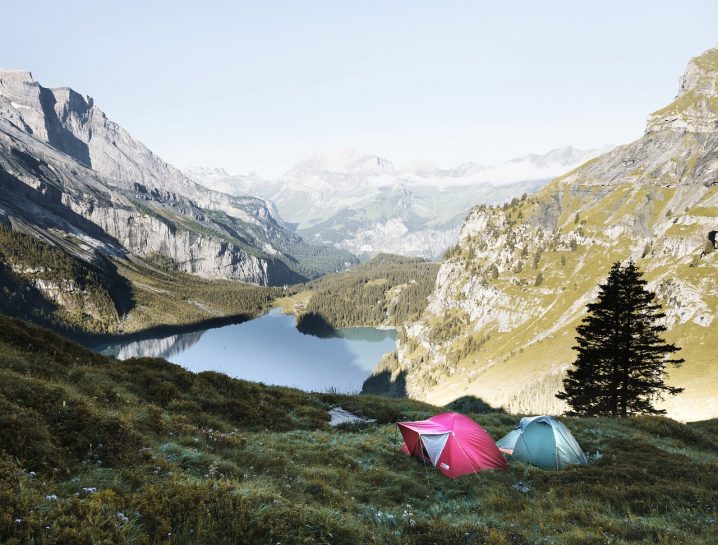Much ink has been spilled on the finer points of cold-weather camping. If you’re looking for general-purpose winter camping tips, this roundup from Backpacker has you covered; if it’s time- and money-saving hacks you’re after, check out Buzzfeed’s exhaustive analysis.
What about the finer points of warm-weather camping? That summer is high season for camping in much of the continental United States doesn’t mean warm-weather camping is entirely risk free. Indeed, as campers’ relative experience level (and tolerance for discomfort) declines, risks to life and limb increase.
Let’s examine seven warm-weather camping musts that even seasoned outdoors people sometimes forget. How many are on your radar right now?

- Optimize Pack Weight, Even If You’re Car Camping
Don’t make more work for yourself than necessary. Even if you’re car camping, do your best to minimize pack weight and maximize pack efficiency. In other words, leave heavy stuff at home, swap out lighter-weight options wherever possible, and fit everything into fewer, larger bags. There’s no reason to spend the better part of your camping trip lugging bags and supplies from your trunk to your campsite.
- Don’t Neglect Style
Enjoying the great outdoors doesn’t mean forgoing all sense of style. These Faveable camping picks prove that you can have it both ways, and there’s plenty more where they came from.
- Don’t Camp Too Close to the Water
Now, for a more practical warm-weather camping tip: avoid camping too close to standing water unless you’re dead-set on getting acquainted with local insect life. With some exceptions, biting insects tend to congregate in these areas, which double as their breeding and feeding grounds. If you must camp close to a sluggish water body…

- Bring Plenty of Insect Repellent & Sunblock
…be sure to bring plenty of insect repellent. In fact, no matter how studiously you avoid insect breeding grounds, you’re sure to encounter some pesky biting critters. Take a look at this list of the top insect repellents for travel and choose one that fits your needs, budget, and likely encounters. (Not all insects respond to the same repellents in the same way, after all.) While you’re at it, bring plenty of sunblock, even if the forecast calls for rain.
- Prepare for Any Weather (Within Reason)
Speaking of rain: warm showers still get you wet. Prepare for any eventuality with the requisite waterproof clothing or camping gear. For a crash course in what to bring on a rainy camping trip, read this primer from REI.
- Optimize Airflow
If the forecast calls for hot weather, plan your sleeping situation accordingly. For starters, orient your tent’s vent flaps toward the breeze to allow for consistent airflow. Ditch the rain flap unless absolutely necessary, too. And consider setting up a sleeping hammock if it’s really stuffy.
Take the Road Less Traveled
Armed with these warm-weather camping tips, you’ll be well-prepared to distance yourself from the droves this summer and stake your claim to a (relatively) untrammeled piece of land. Backcountry camping is far safer and more comfortable during the warm season, after all. So, why not take the road less traveled and indulge your love for adventure in true peace and quiet?



